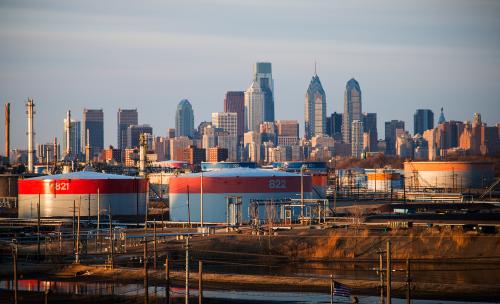The economic development of our neighborhoods, counties, and metropolitan economies are intrinsically linked with the development of roads, bridges, and other infrastructure. From riverways to railways, from rural roads to a new interstate highway system, and from basic telephone service to the 5G networks emerging today, America has always invested to meet the new economic paradigm.
In the case of the Columbus Region, local investments have helped create a highly networked economic juggernaut. But our ability to keep up with technologies, business models, and automation has out-paced infrastructure quality in the past few decades. Now that last century’s infrastructure has reached the end of its useful life, every metropolitan leader must recognize that staying competitive in the global marketplace will require a fresh round of investment in our built environment.
In Columbus, we recognize the urgent need to modernize infrastructure while seeking transformational change. That’s why we’ve made a big bet on digital technology and a platform of regional and federal collaboration to bring that vision to reality.
Winning the future
Several years ago, at the height of the global recession, Columbus’ business and civic leaders were seeking answers about where growth would come from within the coming decade. The community set bold goals in the development of the 10-year Columbus 2020 Regional Growth Strategy. The plan set out to achieve unprecedented job creation, attraction of capital investment, and an increase in per capita income growth.
Columbus leaders knew that being open to growth and innovation, and to the diverse people that have the ideas and energy to drive the Columbus Region forward, would be key to imagining new goals and possibilities. In a young region with over 150,000 college students, a growing population, and a diverse industry mix, this openness is central to who we are. And it’s complemented by the knowledge that the Columbus Region’s preferred future depends on intelligent people, the prudent use of scarce resources, and intentional growth.
In addition to its reputation for openness, the Columbus Region was and is increasingly known as “smart.” The people of Columbus value academia, new residents bring fresh ideas to the Region, and intellectual capital abounds, generated through unique R&D institutions. With the growth of connected devices and the advancement of intelligent infrastructure, “smart” is now also beginning to translate into how we develop our infrastructure above and below ground, and how we connect people to the opportunities in our community.
While great economic success followed our declaration of aggressive growth goals at the beginning of the decade, the process also laid the foundation for our next evolution.
Enter smart cities
A child born today likely won’t need a driver’s license in her lifetime. The electric vehicle is rapidly replacing the combustion engine. Car companies are shifting from selling cars to selling mobility packages. We are in an era that makes predicting future infrastructure especially challenging.
In 1905, Columbus was the buggy manufacturing capital of the world. By 1925, the entire buggy industry had been displaced by the mass production of a combustion engine and the Ford Model T. A similar revolution is upon us and it’s happening at a dizzying speed. Smartphones didn’t exist a decade ago and now, we can’t live without them. Uber and Lyft have transformed the taxi industry. My own car, set to autopilot, drove 10 miles this morning unassisted.
Last year, Columbus was the winner of the U.S. Department of Transportation (DOT) Smart City Challenge. The prize was a DOT and Vulcan-funded grant totaling $50 million to explore, demonstrate, and test technologies and infrastructure of the future. But we always intended the federal award to serve as a spark, not the entire package. Today, with additional public and private funding, we’ve grown that original $50 million to a $500 million effort. We can advance power infrastructure, an autonomous test facility, a major electrification effort for cars, fleets and other vehicles, a citizen mobility app, smart bus corridors, and—perhaps most importantly—efforts to ensure that the most economically challenged neighborhoods can access new technologies to improve quality of life.
Almost a year later, Columbus’ smart city approach is not just a series of high-tech projects. Rather, it is a new way to approach urban planning and economic development.
The Columbus Way
Each metro area has a distinct personality based on its history, its institutions, and its generational leadership. Each will have to go about building a modern economy and the infrastructure to fuel it. Each will have to address issues of economic mobility, and work to provide access to education, healthcare, and job opportunities in its own way.
Columbus is a region that is big enough to have scale, but small enough to get business and community leaders in a room together. In a Harvard Business School case study about Columbus, they coined the term the “Columbus Way,” examining how our public and private sectors collaborate to drive important issues of the day forward.
We are practicing the Columbus Way through our smart city work, challenging ourselves and the country to think about the infrastructure of the future. What it will look like, how we will pay for it, and how we will leverage it for the benefit of all citizens. During Infrastructure Week, there is one thing we know for certain: The future will not look anything like the past. We must be comfortable in this rapidly changing environment and plan for the adaptability that defines the innovative era in which we live.
The Brookings Institution is committed to quality, independence, and impact.
We are supported by a diverse array of funders. In line with our values and policies, each Brookings publication represents the sole views of its author(s).






Commentary
For Columbus, public-private partnerships are key to economic development
May 17, 2017